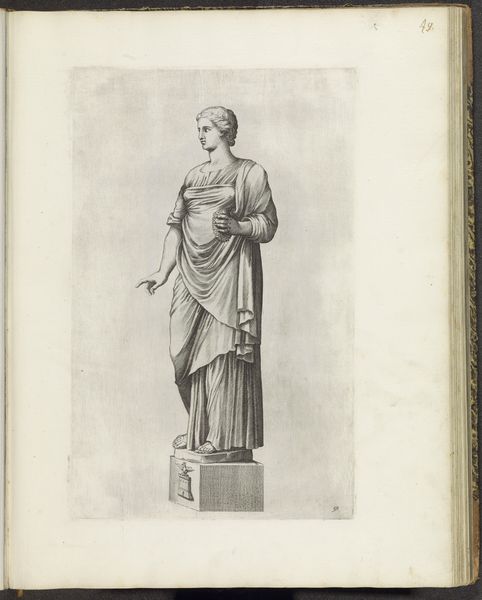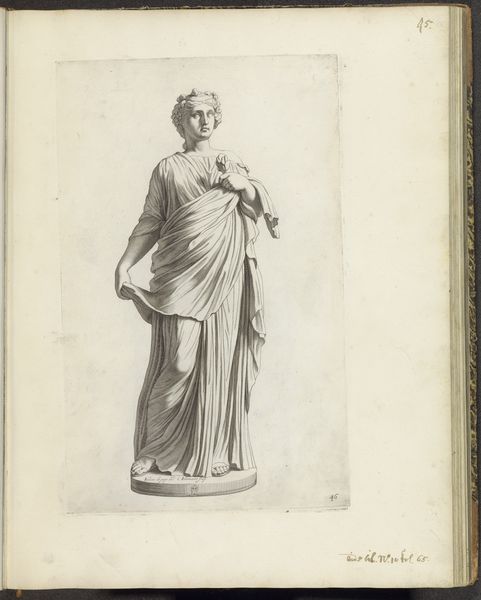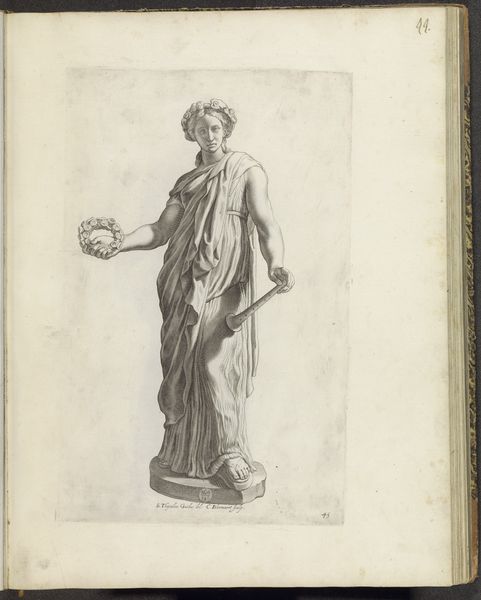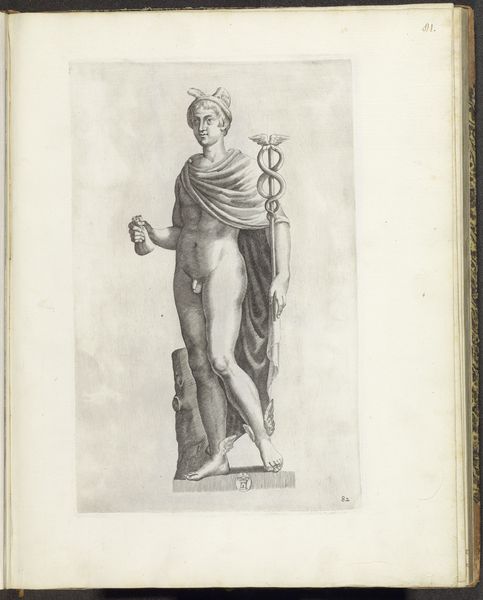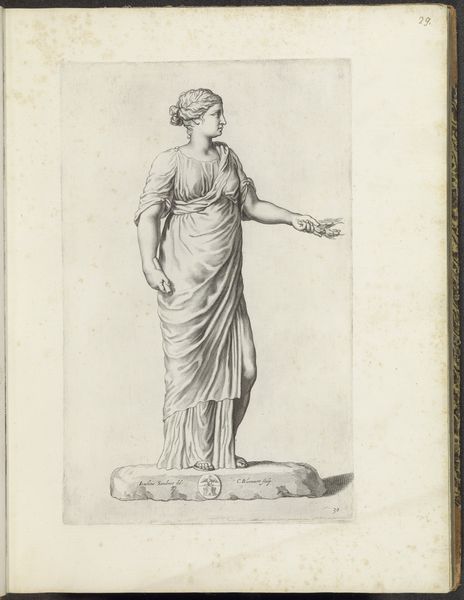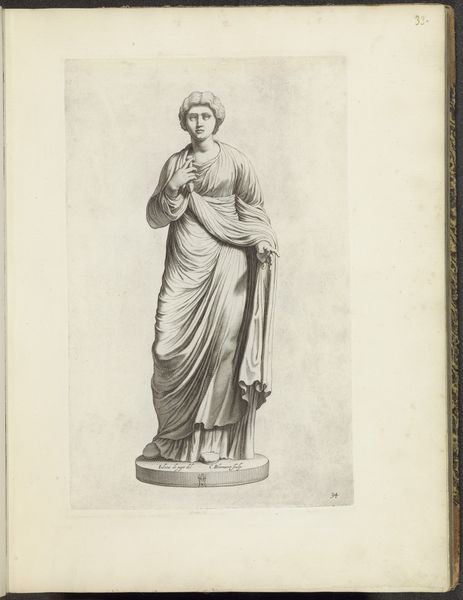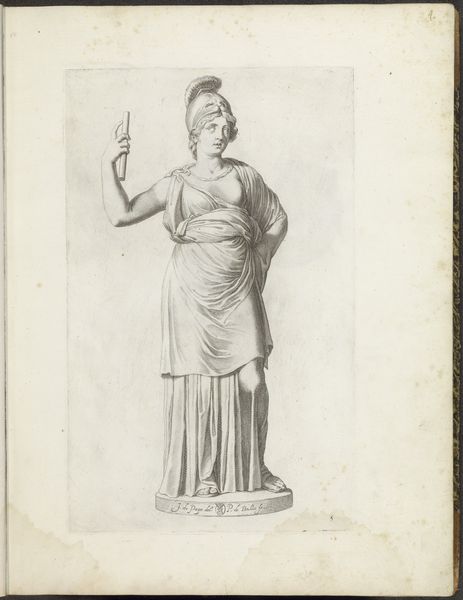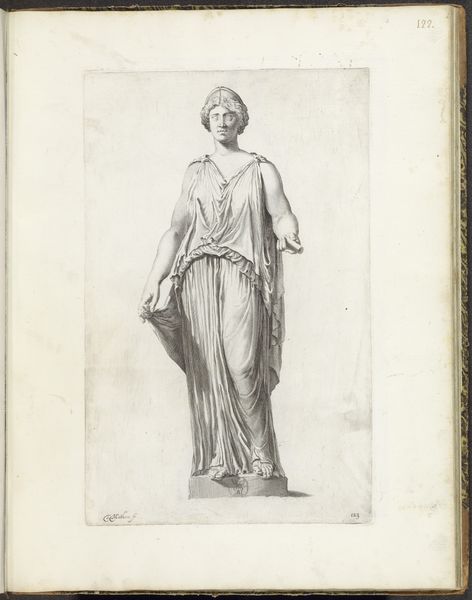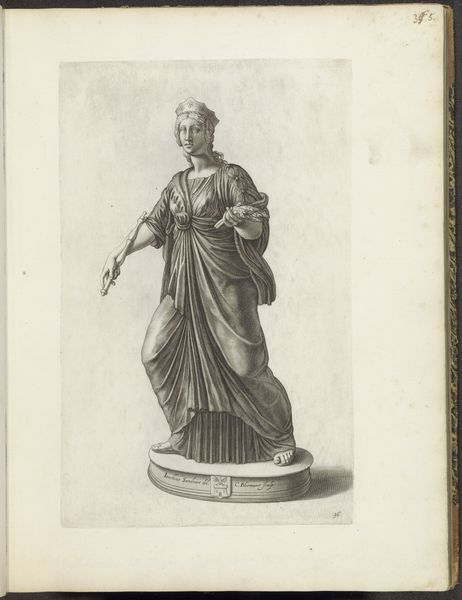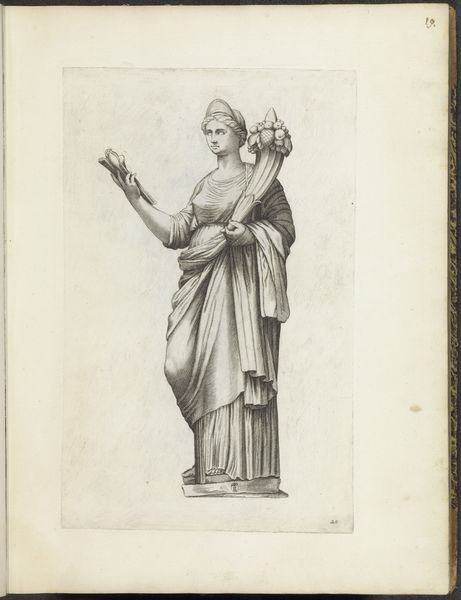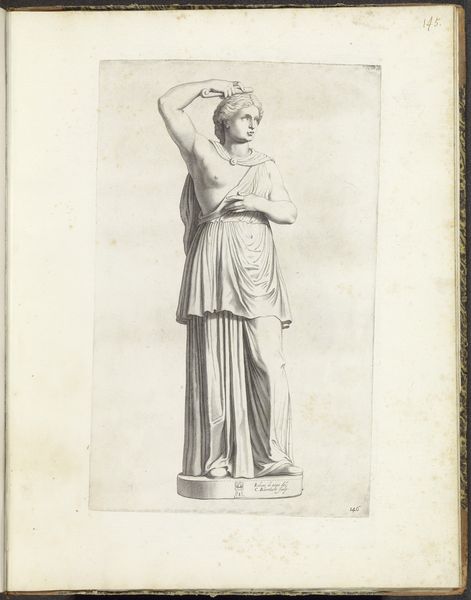
drawing, graphite
#
portrait
#
drawing
#
greek-and-roman-art
#
classical-realism
#
figuration
#
form
#
ancient-mediterranean
#
line
#
graphite
#
history-painting
#
realism
Dimensions: height 370 mm, width 233 mm
Copyright: Rijks Museum: Open Domain
Curator: The resolute pose and classical drapery give it an immediate sense of authority. Editor: Indeed. We are looking at a graphite drawing by Theodor Matham, titled "Statue of a Woman with Right Arm Raised," created between 1636 and 1647. It's currently held here at the Rijksmuseum. Curator: The raised arm, that gesture… It's so iconic. The association of an elevated right arm is generally associated with giving an oath or tribute; here, with the addition of a wreath of laurel in the other hand, this symbolizes honor and high position, most likely, an empress. Editor: It’s a fascinating visual encapsulation of power and status. Looking at the history of images of leaders over time, particularly in periods referencing classical antiquity, what do you notice about the ways this iconography evolves or stays consistent? Curator: The visual language continues to appear, but context and cultural memory are so fluid. Even the crown-like design she is wearing, in my opinion, hints back to the idea of high virtue as a type of divinity. This also appears in many female empress figures or goddesses from antiquity. Editor: It also reveals the complex interaction between power, image production, and how societies want to be represented. I wonder, considering Matham created this in the Dutch Golden Age, what his contemporaries saw when they viewed this piece. The Dutch Republic, remember, was fiercely independent, so a portrait celebrating rulers had the possibility of creating tensions for artists working at this time. Curator: The use of graphite softens the potential message and it might act as an interpretation more than a straightforward portrayal. But the power of such figures, in a visual context, persists because people feel a symbolic echo, of continuity. Editor: Precisely, and recognizing this is crucial for unraveling our present assumptions about status. Thank you, it seems there's a lot to consider regarding Matham’s historical choices in the picture of power here! Curator: Absolutely. Visual analysis gives historical narratives more weight in modern times.
Comments
No comments
Be the first to comment and join the conversation on the ultimate creative platform.
